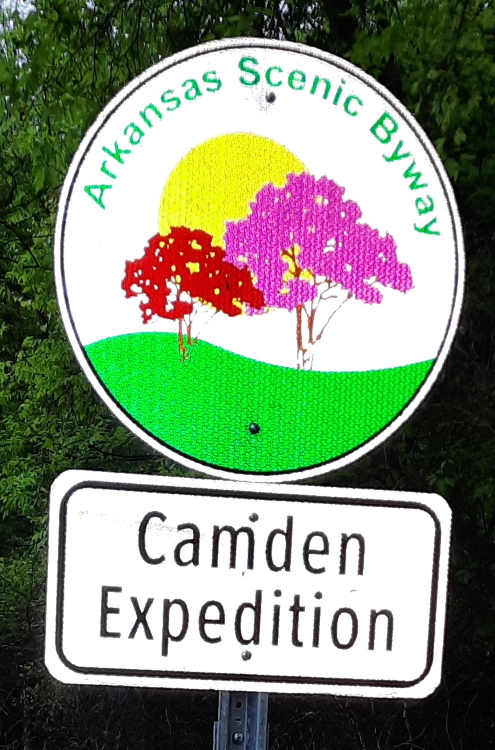Summary
April 30, 1864. Confederate troops, including infantry divisions just arrived from Louisiana, attacked Steele's rearguard as the army crossed the flooded Saline River at Jenkins' Ferry. The Federals held off the attackers and Steele got his army across the river, destroying his pontoon bridge behind him.
The Route
▷ We were last in the Saline Bottoms, ending at Leola, which is our starting point.
▷ Jenkins' Ferry State ParkThe park is on the left (north) side. Turn left (northeast) for 1.9 miles.
▷ Arkansas 46 at Arkansas 291Junction Arkansas 291.
▷ This brings us ready to turn toward the next point of interest, Whitten's Mill.
Google Maps
Show my location on map
At the popup, you must allow your web brower (not us) to know your location.
Your location should update every 5 seconds.
This brings us ready to turn toward the next point of interest, Whitten's Mill.
Jenkins' Ferry Battleground State Park
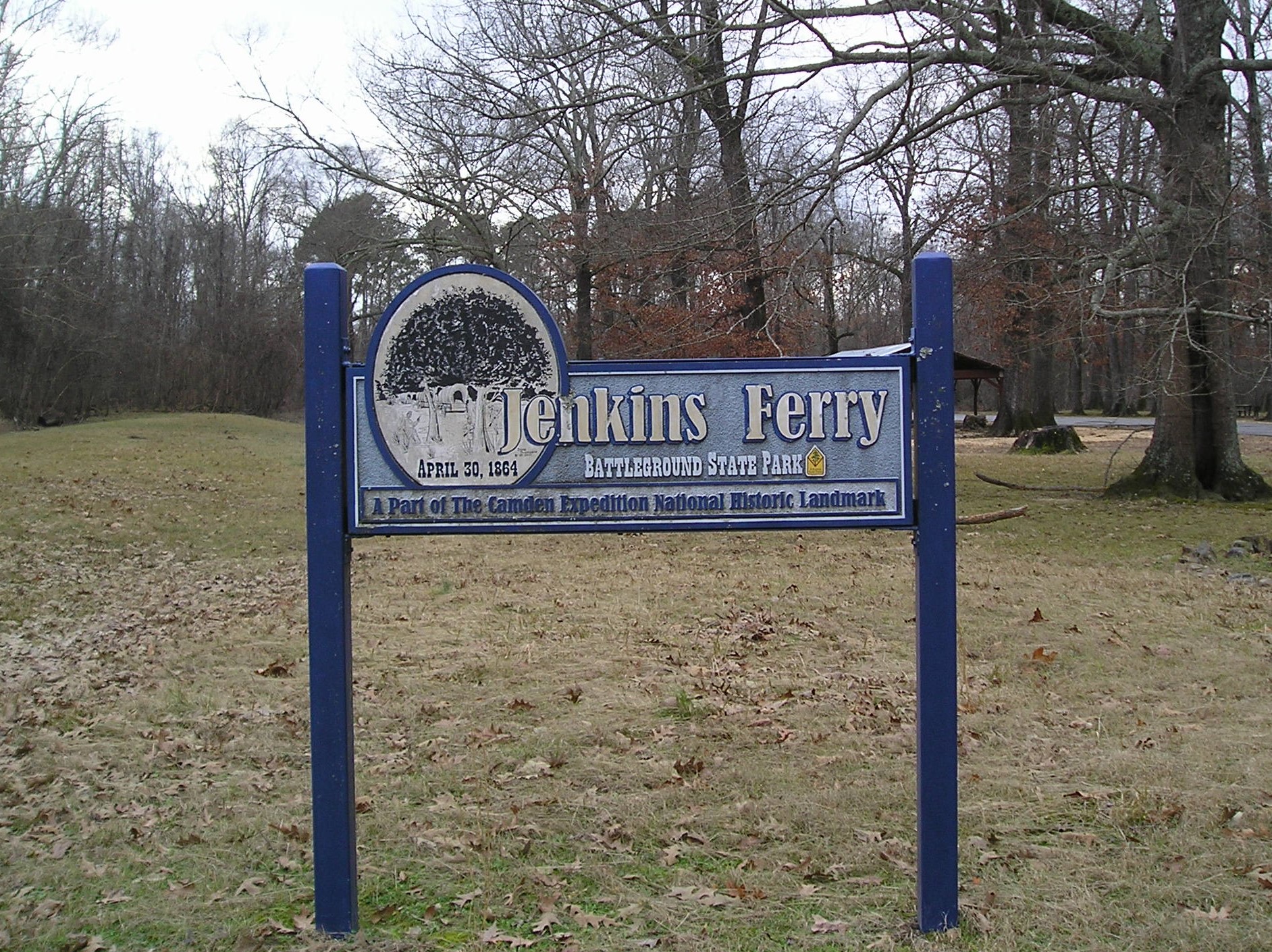
Signage at the entrance of Jenkins' Ferry State Park, a National Historic Landmark.
Created in 1961 by the Arkansas General Assembly and known originally as the Jenkins' Ferry Battleground State Park, the park commemorates the last major battle of the Civil War Camden Expedition, the Arkansas portion of the ill-fated 1864 Red River Campaign. The bloody fighting took place on the opposite bank of the Saline River as the Union Army used their pontoon bridge to move their soldiers and wagon train across the river to safety while their rearguard fought off advancing units of the Confederate Army in the wet lowlands along the rain-swollen river.
Photo by Peggy Lloyd
1928 Marker
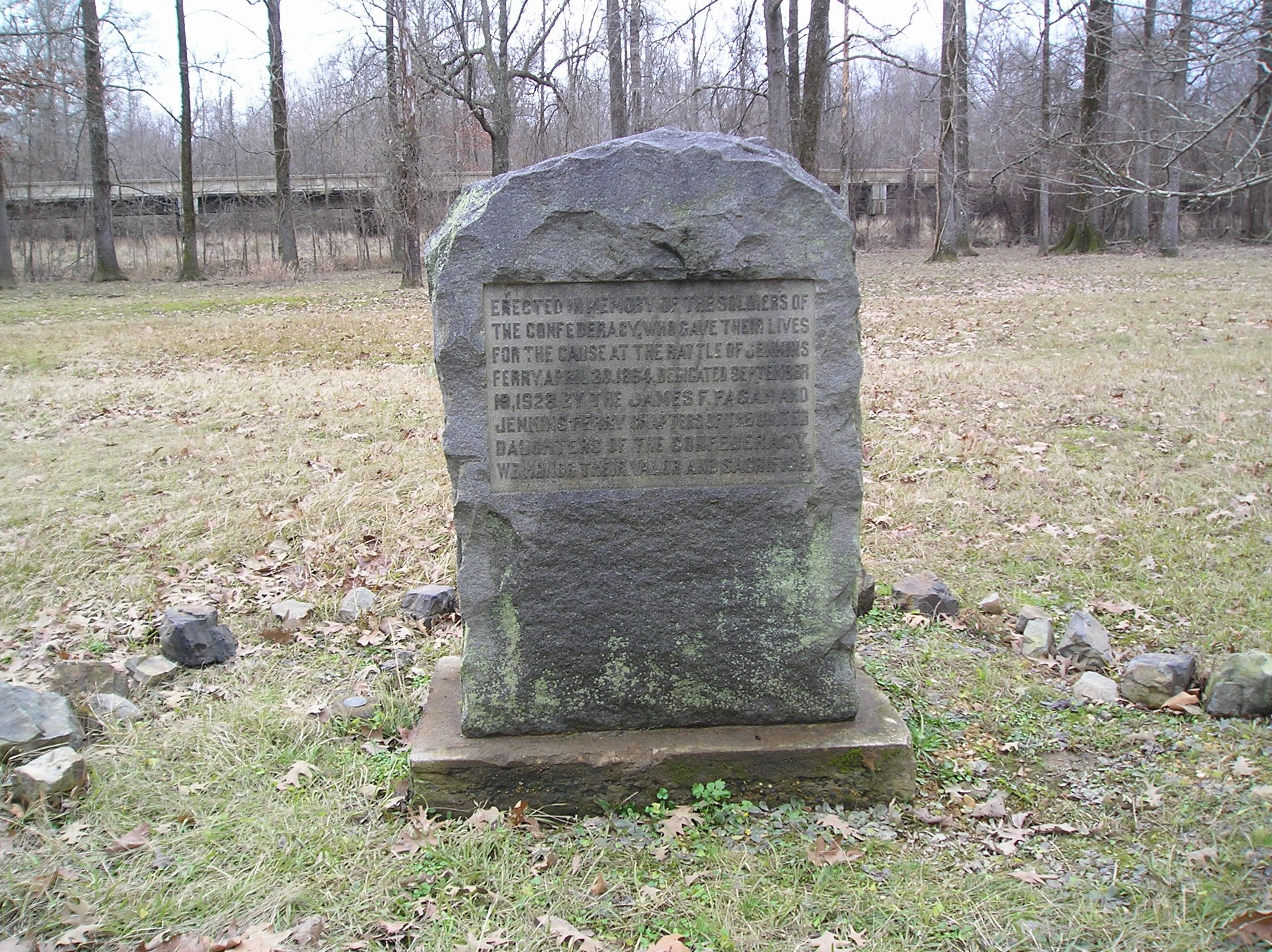
The oldest monument at Jenkins' Ferry is the 1928 stone marker placed by the United Daughters of the Confederacy.
Erected in memory of the soldiers of the Confederacy who gave their lives for the cause at the Battle of Jenkins' Ferry, April 30, 1864, dedicated September 19,1928 by the James F. Fagan and Jenkins' Ferry chapters of the United Daughters of the Confederacy. We honor their valor and sacrifice.
As at the Poison Spring State Park, the oldest monument at Jenkins' Ferry also dates from 1928 and was put in place by the United Daughters of the Confederacy. As at Poison Spring, it commemorates only the Confederate dead. The modern Arkansas 46 bridge over the Saline River is in the background. Other signage in the park maps the battlefield site and its terrain and describes the battle. The Civil War Sesquicentennial markers give different aspects of the events at the site and the history of the ferry.
Photo by Peggy Lloyd
General Samuel Rice Marker

The Confederate Army lost two high-ranking officers at Jenkins' Ferry, but the Union Army also suffered the loss of an important officer though his death came more than two months later.
Samuel A. Rice, then Iowa's attorney general, organized the 33rd Iowa Infantry Regiment in the summer of 1862 and was named its colonel. Stationed in Helena, Rice played a prominent role in the July 4, 1863 battle there and was promoted to brigadier general on August 4, 1863. Rice led troops in the campaign to capture Little Rock and in the Camden Expedition. He was wounded at Elkins' Ferry but was still at the head of his brigade when he led the Union defense of Jenkins' Ferry on April 30, 1864. An ankle wound there led to his death on July 6.
The loss of an effective officer is always a blow, though Rice died months after the end of the Camden Expedition. The Union losses at Jenkins' Ferry were heavy: 471 wounded, 40 missing and 78 dead. The Confederate losses, if they are accurate, were 356 wounded, 1 missing and 90 dead. General Steele also lost wagons, livestock, supplies and equipment, but Jenkins' Ferry was considered a Union victory.
Photo by Peggy Lloyd
Confederate Cannons Captured Marker
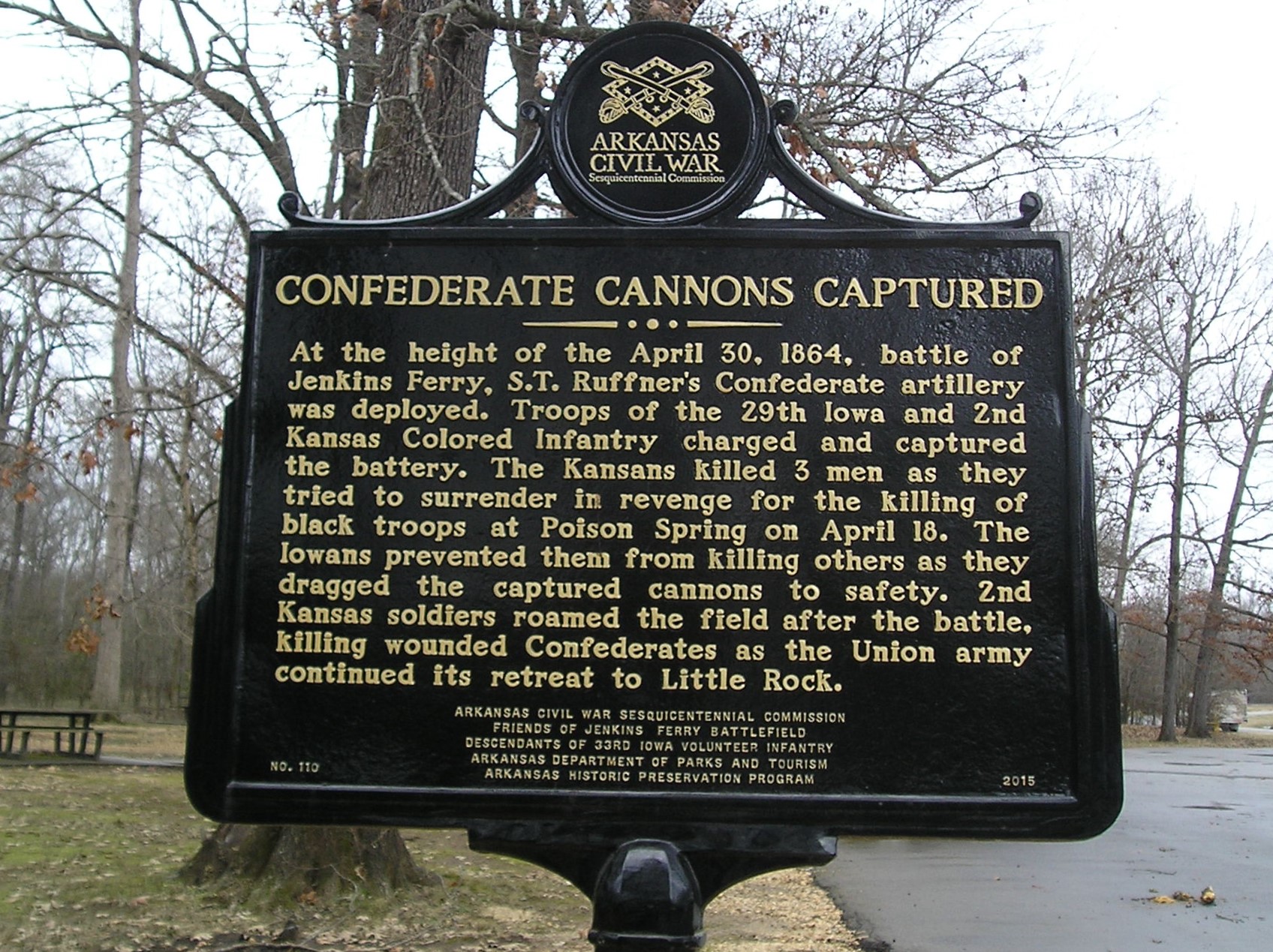
At the height of the April 30, 1864, battle of Jenkins' Ferry, S. T. Ruffner's Confederate artillery was deployed. Troops of the 29th Iowa and 2nd Kansas charged and captured the battery. The Kansans killed 3 men as they tried to surrender in revenge for the killing of black troops at Poison Spring on April 18. The Iowans prevented them from killing others as they dragged the captured cannons to safely. 2nd Kansas soldiers roamed the field after the battle, killing wounded Confederates as the Union Army continued its retreat to Little Rock.
During the Camden Expedition, atrocities were committed by both sides against enemy forces. Black troops who were captured or wounded sometimes became victims. Runaway slaves who attached themselves to Union wagon trains such as the one attacked by Confederate forces at Marks' Mills also became victims. Some Black troops seized the opportunity for revenge as in this instance at Jenkins' Ferry.
Photo by Peggy Lloyd
Jenkins' Ferry Marker
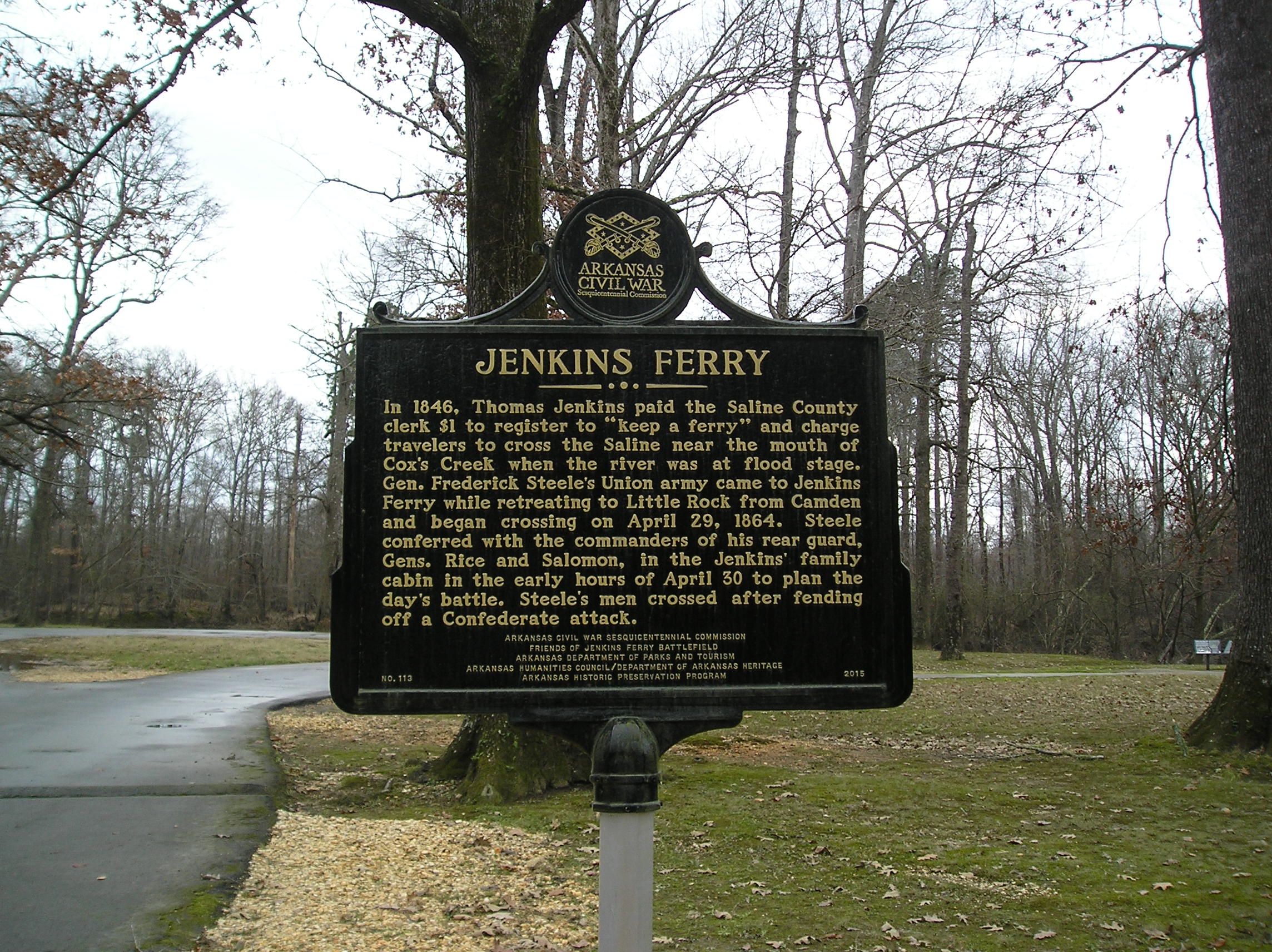
In 1846, Thomas Jenkins paid the Saline County clerk $1 to register to "keep a ferry" and charge travelers to cross the Saline near the mouth of Cox's Creek when the river was at flood stage. Gen. Frederick Steele's Union army came to Jenkins' Ferry while retreating to Little Rock from Camden and began crossing on April 29, 1864. Steele conferred with the commanders of his rearguard, Gens. Rice and Salomon, in the Jenkins' family cabin in the early hours of April 30 to plan the day's battle. Steele's men crossed after fending off a Confederate attack.
Poor dirt roads, ferries operated by families, water-soaked river bottoms, few bridges and almost no railroads were typical of Arkansas at the time of the Civil War. Change was beginning, but it would be almost a decade after the Camden Expedition when the Cairo and Fulton Railroad was built across Arkansas from the northeastern part of the state to the border of Texas in the southwest and revolutionized transportation. General Steele suffered from and benefited from these conditions that also stalled his opponents, but he had a pontoon bridge.
Photo by Peggy Lloyd
Pontoon Bridge Marker
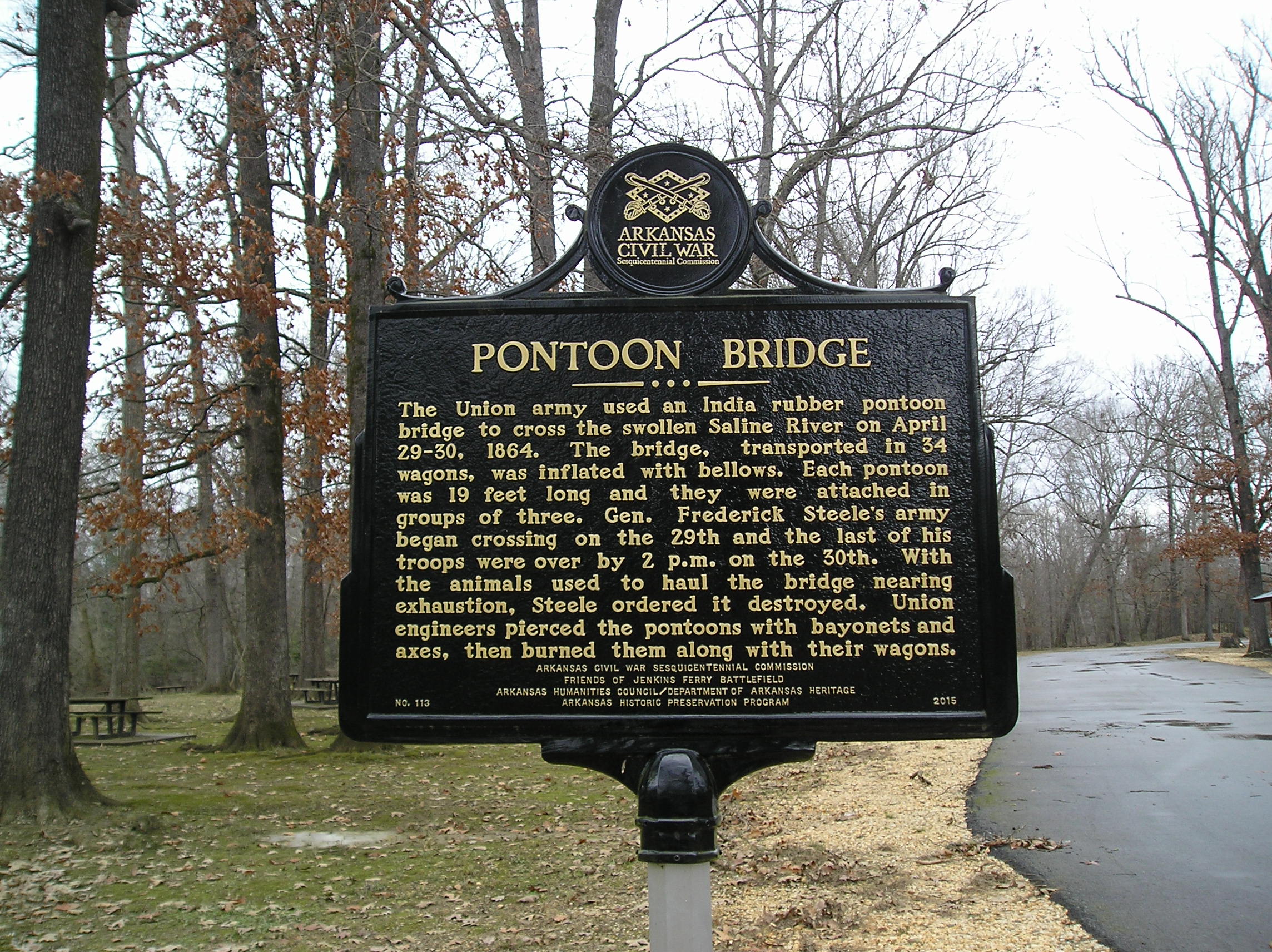
The Union army used an India rubber pontoon bridge to cross the swollen Saline River on April 29-30, 1864. The bridge, transported in 34 wagons, was inflated with bellows. Each pontoon was 19 feet long and they were attached in groups of three. Gen. Frederick Steele's army began crossing on the 29th and the last of his troops were over by 2 p.m. on the 30th. With the animals used to haul the bridge nearing exhaustion, Steele ordered it destroyed. Union engineers pierced the pontoons with bayonets and axes, then burned them along with their wagons.
Steele's troops were hungry and exhausted as were the horses and mules carrying cavalry or pulling artillery or the remaining wagons, but they had to push on through the lowlands along the Saline River to higher ground. Some of the Confederates wanted to pursue the Union troops, but they had no pontoon bridge. Gen. Kirby Smith had a pontoon bridge, but, in the rush up from Louisiana toward Camden, it had, through error, been sent back toward Shreveport. General Smith decided to end the chase at Jenkins' Ferry after the last major confrontation of the Camden Expedition.
Photo by Peggy Lloyd
Old Ferry Site - Panel One Marker
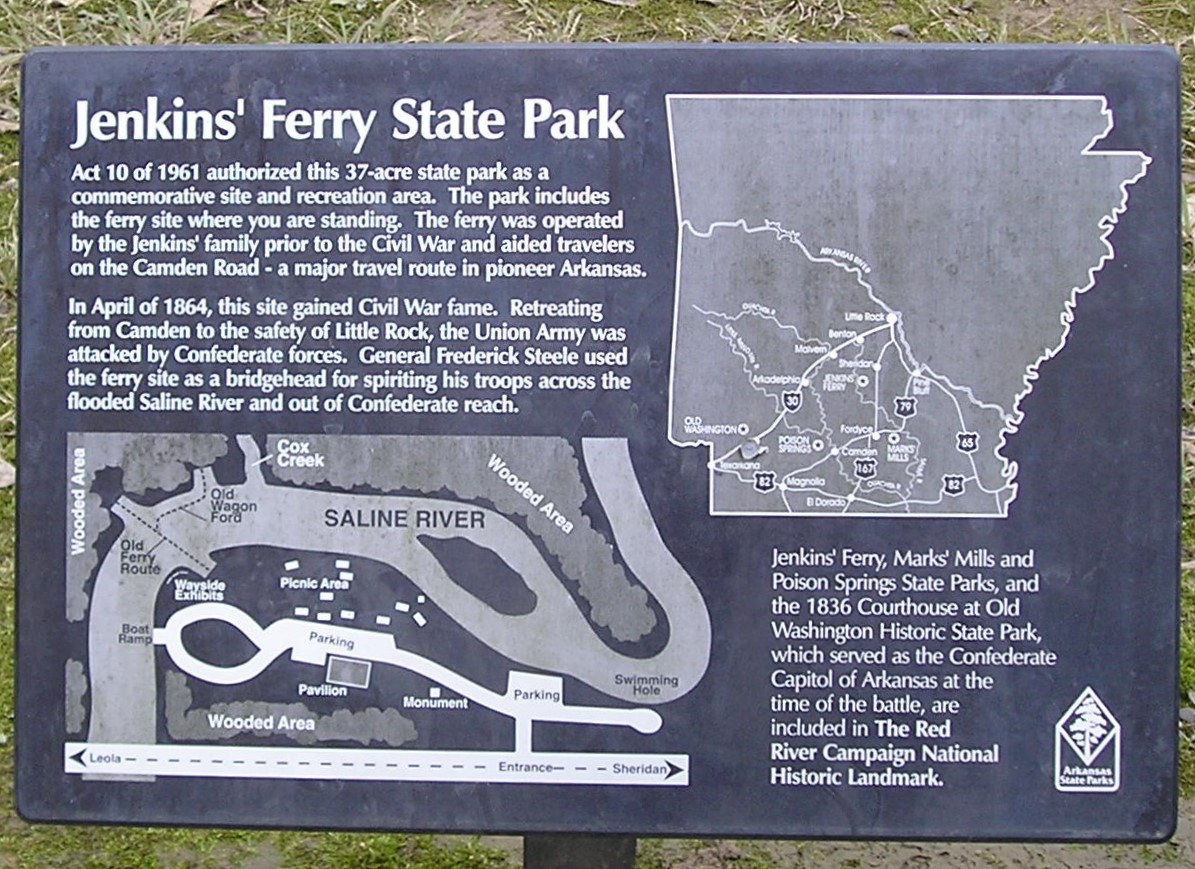
This panel in a group of signs offers a helpful overview of the Jenkins' Ferry Park and its facilities.
Act 10 of 1961 authorized this 37-acre state park as a commemorative site and recreation area. The park includes the ferry site where you are standing. The ferry was operated by the Jenkins family prior to the Civil War and aided travelers on the Camden Road - a major travel route in pioneer Arkansas.
In April of 1864, this site gained Civil War fame. Retreating from Camden to the safety of Little Rock, the Union Army was attacked by Confederate forces. General Frederick Steele used the ferry site as a bridgehead for spiriting his troops across the flooded Saline River and out of Confederate reach.
Jenkins' Ferry, Marks' Mills and Poison Springs State Parks, and the 1836 Courthouse at Old Washington Historic State Park, which served as the Confederate Capitol of Arkansas at the time of the battle, are included in The Red River Campaign National Historic Landmark.
This marker stands among a group of markers listed as 'Wayside Exhibits' on the riverbank near the site of the Jenkins' Ferry and the old wagon road at the end of the circular drive. The monument marked on the south side of the drive near the entrance is the 1928 UDC monument. The overview also shows that this park has two purposes: history and recreation. The boat ramp offers opportunities for boating and fishing. There are facilities for picnics and an old-fashioned swimming hole is designated upriver.
Photo by Peggy Lloyd
Up Next
This brings us ready to turn toward the next point of interest, Whitten's Mill.
